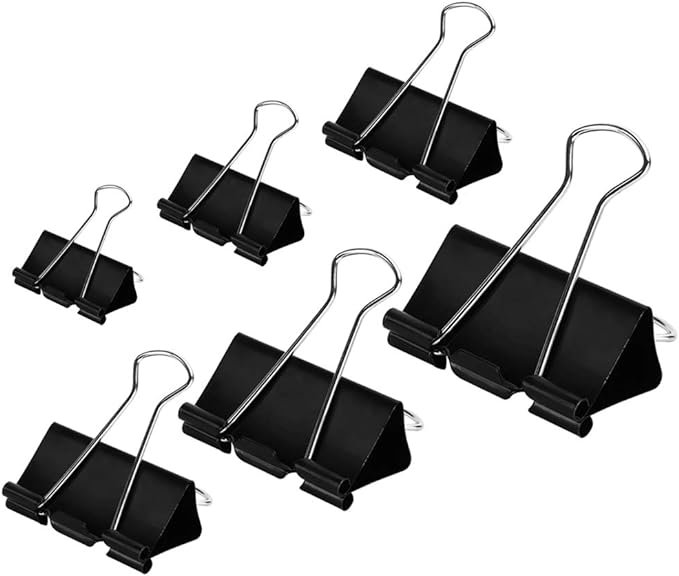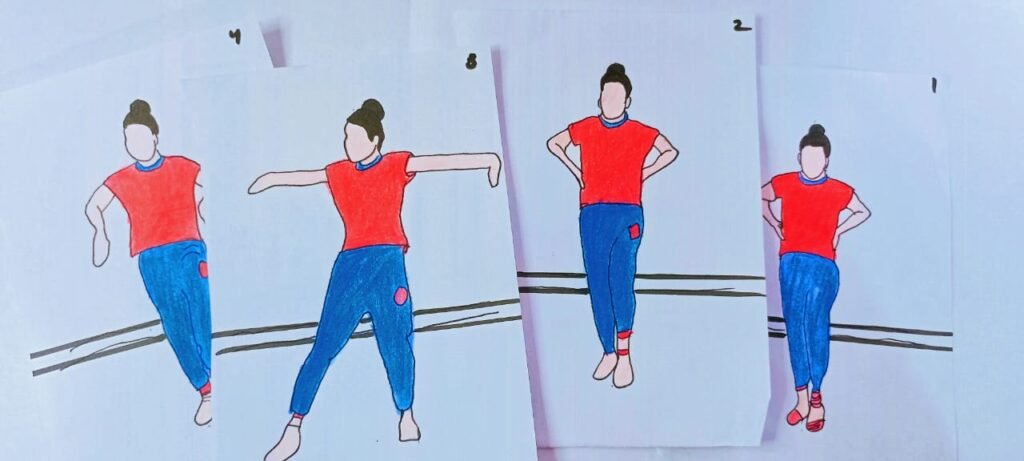Introduction to Flip Card Animations:
Making a high-quality flipbook liveliness is a tomfoolery and connecting method for rejuvenating drawings. In this method you will learn how to make flip card animations from scratch Also how you can give life to your sketches.. You’ll require a heap of little, uniform-sized paper, a pencil, and a lightbox or a sufficiently bright window. On the first sheet, draw the first frame of your animation. Place a new sheet on top of the previous one for the subsequent frame, and trace the parts of the drawing that remain unchanged while making minor adjustments to the moving parts. Rehash this cycle, steadily modifying the position of the moving components to create the illusion of movement. When all casings are drawn, stack them all together and secure one edge with a fastener clasp or staples. This procedure depends on the tirelessness of vision, where the cerebrum mixes the series of pictures into a consistent moving picture. Also try Complete Guide to Easy Sketches of Flowers
Basic Material require for flip card animations:
Making a high-quality flip card animations requires a couple of fundamental materials. You’ll require:
- Paper: Utilize little, uniform-sized sheets, for example, record cards or cut bits of standard paper. Go for the gold size to guarantee smooth flipping.
- Pencil and Eraser: A pencil makes it simple to make changes and corrections. An eraser is fundamental for fixing botches.
- Fine-tip markers or pens: These are valuable for settling and inking your drawings, making them more noticeable and clean.
- Lightbox or Well-lit Window: This helps follow the drawings starting with one page, then onto the next, guaranteeing reliable arrangement of components.

5.Binder Clips or Staples: Utilize these to keep the pages intact and safely on one side.

6.Ruler: Valuable for defining straight boundaries and keeping up with steady extents.
7.Optional: colored pencils or markers For adding variety to your liveliness. With these materials, you can make a straightforward and powerful flipbook liveliness.
Step-by-Step Guidance to Flip Card Animations:
Step 1: Select and accompany your flipcards:
- In the initial step, it is imperative to choose any moving video or any brief tale to envision your activity grouping. and furthermore settle on the keyframes and the quantity of casings required for smooth movement.
Step 2: Collect the screenshots.
Presently gather the screen capture of that individual who is moving in your chosen video and consistently recall that you selected all the screen captures of various advances and observed every one of the points heading to the moving body.
Step 3: Draw the First Frame
Begin with the main page of flip card animations. Draw the underlying picture cautiously to see all the details and bearings of the body.

Step 4: Trace and modify
For flip card animations making place another sheet over the primary casing, utilizing a lightbox or holding it up to a window to see through the paper. Follow the static parts and marginally modify the moving parts to make the following edge.
Step 5: Repeat the process.
Keep following and rolling out steady improvements on each ensuing sheet. Guarantee that each edge advances flawlessly to the next.

Step6: Outline
For a clear and consistent appearance, outline each frame with fine-tip markers after they have been sketched. It likewise gives an alluring vision to your liveliness.
Step7:Colouring
Presently, you variety every one of the edges with alluring and great variety, mixing it dependent upon what you believe you should do with pencil tones or marker colors. You can utilize any that is appropriate for you.
Step 8: Assemble the Flipbook
Stack the sheets all together and secure one edge with a cover clasp or staples. Attention to detail, perseverance, and practice are necessary for the successful creation of a homemade flipbook animation. Here are a few complete tips to assist you with achieving the best outcomes:

Success tips
Planning and preparation
- Storyboard Your Animation: Prior to beginning, sketch an unpleasant storyboard to imagine your liveliness grouping. This aids in arranging the keyframes and grasping the progression of development.
- Keep It Simple: Start with straightforward movements, for example, a bobbing ball, a waving hand, or a squinting eye. As you gain certainty, you can handle more perplexing groupings.
- Uniform Paper Size: Guarantee that all pieces of paper are of uniform size. This consistency is essential for smooth flipping and an expert look.
- Gather Quality Materials: Make use of pencils, fine-tip markers, high-quality paper, and a dependable light source (such as a window or lightbox). Quality materials have an effect on the end result.
Drawing Techniques of flip card animations:
- Lightly Draw Initial Sketches : Utilize a pencil for your underlying portrayals. Light lines are easier to change and erase, giving you more freedom to make changes.
- Use a Lightbox or Window: Following past casings keeps up with consistency in your drawings. A lightbox or a sufficiently bright window can be significant for this reason.
- Small Increments: Change only a few things between frames. This guarantees smoother movement. Enormous leaps can cause the activity to seem jerky and less liquid.
- Consistent Elements: Keep the static components of your drawings (like foundation or fixed objects) steady across edges to stay away from superfluous interruptions.
Inking and Coloring
- Finalize with Fine-tip Markers: Once happy with the pencil draws, go over them with fine-tip markers. This makes the drawings more clear and more expert.
- Optional Coloring: Adding variety can upgrade your liveliness, yet keep it easy to try not to overpower subtleties that might divert from the movement.
Assembly and Testing
- Proper Alignment: Guarantee all sheets are very much adjusted while stacking them. The animation’s smoothness may be compromised by misalignment.
- Secure Binding: Utilize a solid fastener clasp or staples to tie one edge of the flipbook. This guarantees that the pages stay together while flipping.
- Test Frequently: Check the animation’s flow by flipping through the pages on a regular basis. This aides in getting and revising any irregularities almost immediately.
Refinement and Practice
- Observe Real Movements: Concentrate on genuine developments or reference movements to comprehend how movement functions. Timing and fluidity can both be better understood through this.
- Practice Patience: Liveliness is a tedious interaction. Be patient and take as much time as necessary with each casing to guarantee the best quality.
- Learn from Mistakes: Don’t let errors discourage you. Use them as learning chances to work on your strategy and comprehension of movement.
- Seek Feedback: Show your flipbook to companions or family and get their input. Open-minded perspectives can recognize regions for development that you could have missed.
- Experiment: Once agreeable, try different things with various styles, velocities, and kinds of movement. This can grow your abilities and make your movements more powerful and intriguing.
By following these tips and committing time to practice and refinement, you can make great hand crafted flip card animations that rejuvenate your drawings and feature your imagination. While making a flipbook animation can be a fun project, there are a few mistakes that can hurt your progress and the quality of your work. Here are key things to keep away from:
Common Pitfalls to Avoid in flip card animations:
kipping the Planning Stage:
Why Avoid:
Without an unmistakable arrangement or storyboard, your liveliness can become muddled and require intelligibility.
What to Do Instead:
Continuously sketch a harsh storyboard and plan keyframes prior to beginning.
Inconsistent Paper Sizes:
Why Avoid
Misalignment between sheets of different sizes can make the flipbook difficult to manipulate and the animation less smooth.
What to Do Instead:
Guarantee all sheets are of uniform size.
Large Changes Between Frames:
Why Avoid:
Huge changes can bring about jerky and unnatural movement.
What to Do Instead:
Make little, steady changes between casings to make smooth advances.
Neglecting to Use a Lightbox or Window
Why Avoid:
Not involving a lightbox or window can prompt irregularities in your drawings, making the liveliness look rough.
What to Do Instead:
Utilize a lightbox or a sufficiently bright window to follow past casings and keep up with consistency.
Ignoring the Importance of Consistency:
Why Avoid:
Irregularities in size, shape, and position can divert from the activity.
What to Do Instead:
Maintain consistency in static components and make sure that moving parts change gradually.
Overcomplicating Early Projects:
Why Avoid:
Beginning with complex activities can be overpowering and lead to disappointment.
What to Do Instead:
Start out with simple animations and work your way up to more complicated ones as you get more experience.
Using Heavy Lines in Initial Sketches:
Why Avoid:
Weighty lines can be hard to eradicate and change, prompting a jumbled look.
What to Do Instead:
Utilize light pencil strokes for introductory representations, which are simpler to change.
Forgetting to Test Regularly:
Why Avoid:
Not testing your flip card animations routinely can bring about finding significant issues past the point of no return simultaneously.
What to Do Instead:
Often flip through the pages as you work to check for perfection and consistency.
Poor Binding:
Why Avoid:
Free or inappropriate restricting can make flipping troublesome and disturb the liveliness.
What to Do Instead:
Utilize a strong cover clasp or staples to safely tie one edge of the flipbook.
Overloading with details:
Why Avoid:
A lot of detail can make the liveliness look jumbled and occupy the movement.
What to Do Instead:
Keep subtleties negligible and center around the essential components of movement.
Impatience:
Why Avoid:
Hurrying through the cycle can prompt mix-ups and a lower-quality flipbook.
What to Do Instead:
Take as much time as is needed with each casing and show restraint.
Neglecting Feedback:
Why Avoid:
Without criticism, you could miss regions that need improvement.
What to Do Instead:
Show your flipbook to other people and look for useful analysis. Staying away from these normal traps will assist you with making a more clean and viable flip card animations andflipbook movement. Center around arranging, keeping up with consistency, rolling out little improvements, and testing your work consistently. You will enjoy the process more and improve the quality of your animations if you take your time and avoid these mistakes
Conclusion
A creative and satisfying way to bring drawings to life through the magic of sequential art is to make homemade flipbook animations. By following an organized interaction—aarranging storyboards, keeping up with predictable paper sizes, rolling out steady improvements, and consistently testing your advancement. You can accomplish smooth and drawing-in movements flip card animations. Utilizing quality materials and devices like lightboxes and being patient and meticulous further improves the result. Keeping away from normal traps like conflicting casings, overcomplicated plans, and unfortunate restricting guarantees a cleaner eventual outcome. With training and meticulousness, natively constructed flipbook liveliness can be a great method for communicating imagination and figuring out the basics of movement in activity. Whether for no particular reason, schooling, or imaginative articulation, this involved methodology offers a fantastic look into the universe of liveliness.

